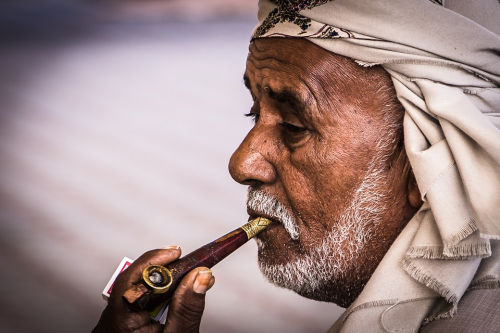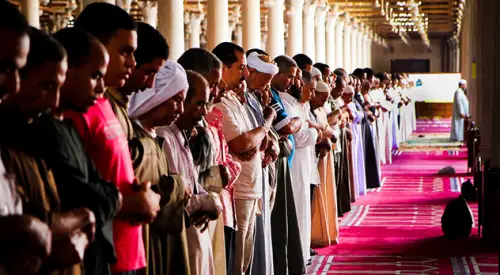Since Arabs and a Muslims bear a lot of similarities, many people believe that they belong to the same group. However, not all Arabs are Muslims the same way that not all Muslims are Arabs. This article provides the differences between the two.
Summary Table
| Arab | Muslim |
| A term used to refer to the group of people who speak Arabic as their first language | A term used to refer to a follower of the Islam religion |
| Member of the Semitic people of the Arabian Peninsula | Do not belong to an ethnicity |
| Not all Arabs follow the Islam religion | All Muslims follow the Islam religion |
| Arabic is the Arab’s first language | Does not use any specific first language |
| Commonly lives in countries within the Arab World | Can be found anywhere in the world |
Descriptions

Arab is the term used to refer to the group of people who speak Arabic as their first language. They are members of the Semitic people of the Arabian Peninsula. They commonly inhabit Western Asia, North Africa, the Horn of Africa, and the western Indian Ocean islands. Arabs are a diverse group with different religious affiliations. Although some tribes had adopted Christianity or Judaism, most Arabs follow polytheistic religions. A group called “Hanifs” observe monotheism.
The nations in the Arab World include Mauritania, Morocco, Algeria, Tunisia, Libya, Chad, Lebanon, Egypt, Sudan, Jordan, Syria, Iraq, Kuwait, Bahrain, Qatar, United Arab Emirates, Saudi Arabia, Oman, Yemen, Iran, Turkey, East Africa, South America, Europe, and Southeast Asia.
“Arab” is not an ethnic designation; instead, this word has to do with the cultural and linguistic of the people who call themselves Arabs. Did you know that Arabs are not all the same race? Some Arabic people have red hair and blue eyes, while others are dark-skinned or somewhere in between.
Arab countries have a rich ethnic diversity. They also speak different languages. There are about 464.68 million Arabs who live in Arab lands, according to Statista.
Each Arabic country includes different ethnic groups whose first language is not Arabic. While members of these groups may also speak Arabic, they use their own languages to communicate within their countries or regions.
The most commonly spoken languages in Arab countries include Arabic, Persian (Farsi), Turkish, Hebrew, Greek, Kurdish, amongst others.

A Muslim, on the other hand, is a follower of Islam, a monotheistic religious group revealed through Muhammad, the Prophet of Allah. The majority of them follow the teachings and practices of Muhammad (Sunnah). Muslims consider the Quran (Koran) as their holy book.
They believe that the Quran is the verbatim word of God revealed to the Islamic prophet and messenger Muhammad.
Muslims have three major denominations, the “Sunni”, “Shia,” and “Ahmadiyya.” Followers of this religion can be found worldwide. Indonesia is the most Muslim-populated country in the world.
According to World Population Review, there are about two billion Muslims in the world, and there are 57 member states in the Organization of Islamic Cooperation.
One of the main reasons for the confusion between Arabs and Muslims is that Islam uses the Arabic language in the Quran.
So many Muslims do know some Arabic, though their first language may be entirely different.
Arab vs Muslim
So what’s the difference between an Arab and a Muslim?
Firstly, the term “Arab” is used to refer to the group of people who speak Arabic as their first language, while “Muslim” is a term used to describe a follower of the Islam religion.
Secondly, an Arab is a member of the Semitic people of the Arabian Peninsula. Meanwhile, a Muslim does not belong to an ethnicity. Rather, Muslims belong to a religious group.
Not all Arabs are followers of the Islam religion. They are a diverse group of people that are affiliated with different religious groups.
All Muslims, on the contrary, follow the Islam religion.
One of the main reasons for the confusion between Arabs and Muslims is that Islam uses the Arabic language in the Quran. So many Muslims do know some Arabic, though their first language may be entirely different.
In addition to that, Arabic is the Arab’s first language, while Muslims may use any language in the world, depending on which country they came from.
Finally, Arabs commonly live in countries within the Arab World including Mauritania, Morocco, Algeria, Tunisia, Libya, Chad, Lebanon, Egypt, Sudan, Jordan, Syria, Iraq, Kuwait, Bahrain, Qatar, United Arab Emirates, Saudi Arabia, Oman, Yemen, Iran, Turkey, East Africa, South America, Europe, and Southeast Asia. Muslims, on the other hand, can be found anywhere in the world. Nowadays, Indonesia the most Muslim-populated nation.
What can we conclude? Not all Arabs are Muslims, and not all Muslims are Arabs. It is incorrect to assume that an Arabic individual is a Muslim or that a Muslim person is necessarily Arabic. Arabic people are highly diverse in their ethnicity, the religions they practice, and the languages they speak.
The same can be said for Muslims; they come from a broad range of countries and ethnicities. And while they may understand some Arabic, it’s not always their first language.





